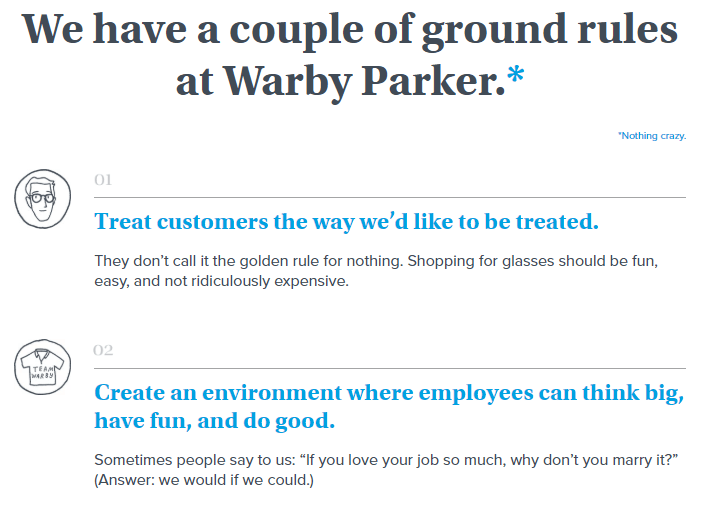Many companies are actively seeking to understand their customers to design and deliver an enhanced customer experience. With 74% of surveyed retailers and suppliers stating that “understanding consumer preferences” is critical to their strategy, it appears that creating better customer experiences is catching on and with good reason. The number of interactions with customers is increasing through new, digital devices which means if a company is not expanding its customer experience into the digital world, its competitors are doing so. While a good customer experience does not immediately translate to the bottom line, it does foster the gift that keeps on giving: loyal customers. There is little doubt that as the digital revolution continues and customers crave more from their interactions with companies, a winning strategy will hinge on good customer experience.
Customer acquisition often costs 6-7 times more than retaining a customer and repeat customers spend on average 33% more than new customers. Additionally, 86% of consumers will pay up to 25% more for better experience, leading many companies to view providing a strong customer experience as a no-brainer. So how does a company begin to better understand the customer and create an improved experience? The answer is simple but exceedingly difficult to implement: transform into a customer-centric company.
The central tenet of a customer-centric company is that every member of the organization focuses on providing value to the customer. As a result, understanding how companies deliver value is key. While there are many ways, we often see an emphasis either on (1) products or (2) experiences.

On the one hand, you have a company like Apple, which creates products so in-tune with customers that camp towns spawn every time a new device is released. On the other hand, you have experiences delivered by the likes of The Home Depot which engages devotees of the brand every time an event takes place at their stores (often weekly at their 2,200+ locations). Both companies are customer-centric because, at their core, they provide outsized customer value but do so in two distinct ways. While companies typically emphasize delivering value through either their products or experiences they have opportunities to do both. For instance, at Amazon, their product (Prime) provides value through speedy delivery, while their experience (customer support/app/desktop site) provides value through convenience. As a rule of thumb, the customer pays for the value of a product and everything else is experiential value.

Once a company understands how it wishes to provide value to the customer, the first step is to align the organization via a vision. This starts with a mission statement to guide objectives and an internal culture that reinforces the vision. Amazon strives to be “Earth’s most customer-centric company” while Home Depot lists “providing the highest level of service” above all other goals of the company (including assortment and price). In contrast, PepsiCo’s mission statement does not mention customers once in their mission statement and places seeking “to produce financial rewards to investors” as their top goal (above employees, partners, and communities). Actions certainly speak louder than words, however placing the customer above all else in a mission statement produces a framework for future decisions.

Next, comes the hard part: walking the walk. There are many facets to becoming a customer-centric company. However, there are three we believe are critical:
- Seek to understand the perspective of the customer
A company undergoing a transformation to becoming customer-centric must infuse the customer’s perspective throughout every business function. Often companies either do not attempt to find out what the customer is thinking or, if they do, they fail to act on it. This disconnect creates a gulf between the value a company believes they are providing and the value customers perceive. In a survey of customers of 362 companies, 8% described their experiences as “superior” however 80% of the companies surveyed believe that the experience provided was indeed superior. There are three significant steps in understanding the customer’s perspective: 1) gathering the customers’ perspective, 2) distributing insights across the company and 3) acting on the data. Companies are tackling this problem in a variety of ways with three that stuck out in our research.
- To gather customers’ perspectives beyond data-based metrics (customer engagement, “voice of the customer” surveys, etc.), Intuit puts out prototypes and watches customers’ reactions through trial and error
- To ensure customer insights make it across the entire company, Amazon appoints “Customer Experience Bar Raisers” to facilitate
- When choosing investments in new technologies, Cisco defers its choice until key customers have registered their reactions – then commit themselves as soon as possible
- Empower employees at all levels to do what is right for the customer
What better way to support a customer-centric mission statement than rewarding employees for doing just that? A large part of becoming customer-centric is taking the long view of customer relationships. Simply put, it is to build trust and loyalty in every transaction, regardless of profit and loss generated. Legend has it, corroborated by both Erik and Blake Nordstrom (co-CEOs at Nordstrom), a man once rolled in tires he wanted to return into a store and demanded a full refund – even though Nordstrom had never sold tires. The store clerk accepted them on the spot, despite not seeking or receiving his manager’s approval. Instead of being reprimanded for losing the company money, the company celebrated his actions. As Nordstrom himself put it years later, “He used great judgment, he treated the customer like he would like to be treated.” To be sure, helpful and customer-focused employees are a winning strategy. With 73% of consumers saying that friendly employees make them “fall in love with a brand,” ensuring the front line employees know their decisions to help the customer, even at a loss, will be backed up in full – right up to the CEO – is important.
- Take care of employees to take care of customers
Happy and engaged employees translate to happier customers, which is why the most customer-centric companies have strong cultures and go above and beyond for their employees. A relative newcomer, Warby Parker, has a strong customer-centric culture and product, and to keep it alive, has built an entire team responsible for promoting the company’s culture. The aim is to contribute to the employees’ well-being, as well as fostering a platform to collaborate and share knowledge. By building a relationship of trust with its employees, a company leads by example. Additionally, by retaining employees, a company can drive culture even further. Through unrivaled benefits and pay across the entire company, Costco aims to keep its team members for a long time. In a culture built around the customer, having continuity is important and Costco’s retention rate for employees who have been there one year is 94%.

While “customer-centric” and “transformation” have become buzz-words thrown out during investor meeting (see our article on transformation here), it takes a significant amount of introspection to understand how a company can provide value. If client value is not present in a company’s DNA from its inception (i.e. Amazon, Nordstrom, Warby Parker), the challenges cannot simply be addressed via more surveys, KPIs or technology. An organization can start by understanding customer value and then setting a corporate vision centered on the customer. Reinventing the culture to seek the customer perspective rewards customer-centric behavior and empowers employees to work on behalf of the company to elevate the experience.




